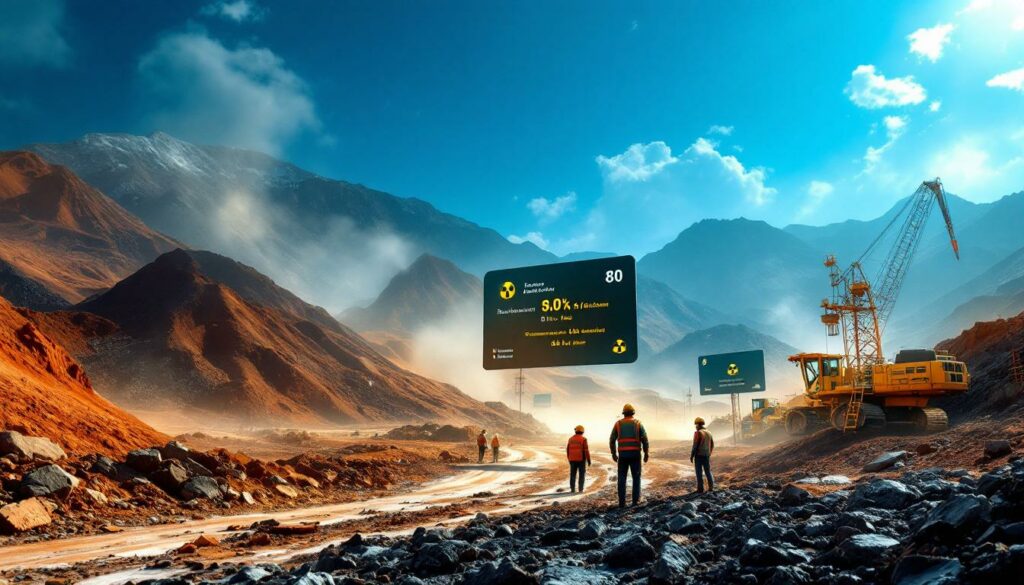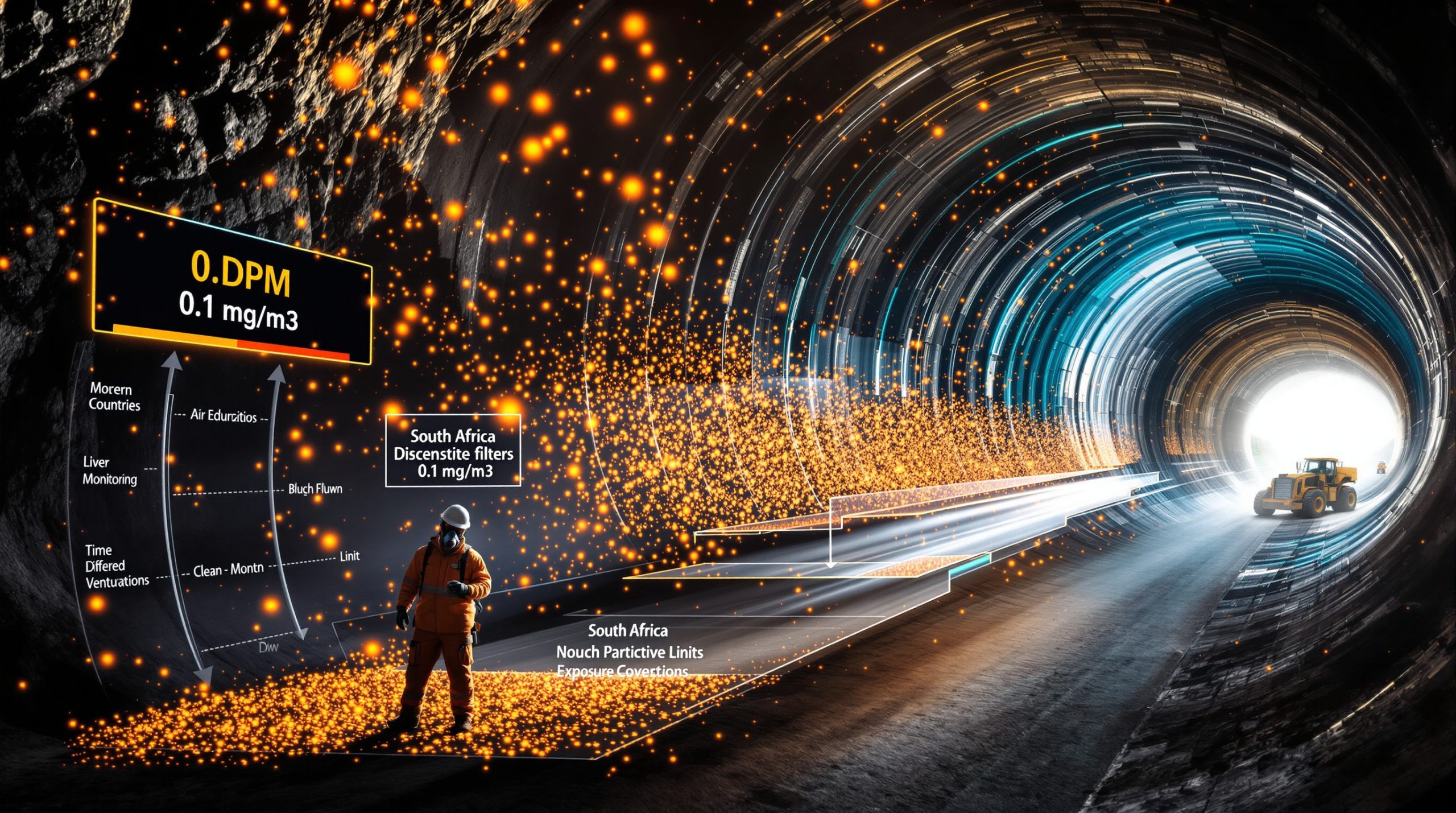Tajikistan's Uranium Legacy: A Multi-Decade Rehabilitation Journey
Tajikistan's landscape bears the silent scars of Soviet-era uranium processing that occurred from 1945 to 1970. This radioactive legacy, concentrated primarily in the northern Sughd region, has left behind extensive environmental challenges that have remained largely unaddressed since the Soviet Union's collapse. Today, a significant international effort aims to rehabilitate these contaminated sites, marking a crucial step toward environmental restoration and community protection.
Historical Context of Uranium Mining in Tajikistan
Soviet uranium processing operations in Tajikistan spanned a 25-year period, leaving behind a troubling environmental legacy. The mining and processing activities in Istiklol (formerly known as Taboshar) alone covered approximately 250 hectares, with radioactive tailings accumulating throughout this period. These operations primarily served the Soviet nuclear program during the Cold War era, when environmental considerations were secondary to military objectives.
Following the Soviet Union's collapse in 1991, many of these sites were effectively abandoned, with minimal safety measures in place. The newly independent Republic of Tajikistan, facing numerous political and economic challenges during its transition period, lacked the resources and technical capacity to address these hazardous sites independently.
The geographic concentration of these sites in the Sughd region has created particular challenges, as this northern territory contains multiple contaminated areas requiring attention in Adrasmon, Istiklol, Bobojon-Gafurov, and Buston districts.
Environmental and Health Implications
The unaddressed uranium processing sites pose significant health risks to local communities. Radiation exposure represents the most direct threat, particularly in areas where waste materials remain exposed to the elements. Wind erosion can spread radioactive dust particles, while water runoff threatens to contaminate local water sources.
Long-term environmental consequences include soil degradation, reduced agricultural productivity, and potential groundwater contamination. The complex interaction between radioactive materials and environmental systems creates cascading effects that can persist for generations without proper intervention.
Public health concerns have become a driving force behind current rehabilitation efforts. As TsPTI Director General Yakov Nikonov explained: "Implementation of the project will reduce the risks of radiation exposure, prevent further pollution of soil and water resources, and also create conditions for the socio-economic development of the region."
Organizations Leading Uranium Site Rehabilitation in Tajikistan
The current rehabilitation efforts represent a complex international partnership between Russian and Tajik organizations, operating under formal governmental agreements and leveraging specialized technical expertise.
Rosatom's Role and Expertise
Russia's state atomic energy corporation Rosatom, through its fuel division TVEL, plays a central role in the rehabilitation project. The Central Design & Technological Institute (TsPTI), a Rosatom subsidiary, serves as the primary contractor after winning the tender in 2022. This organization brings considerable technical expertise to the project, having previously completed similar rehabilitation work in the region.
TVEL's designation as the Commonwealth of Independent States (CIS) Base Organisation for nuclear legacy elimination since 2021 further cements its leadership role. This designation acknowledges TVEL's comprehensive capabilities in handling used nuclear fuel management, radioactive waste processing, and decommissioning of nuclear facilities.
Rosatom's involvement brings not only technical capacity but also access to specialized equipment and methodologies developed through decades of nuclear industry experience. This expertise transfer represents a significant component of the international cooperation framework.
Tajikistan's Governmental Participation
On the Tajikistan side, multiple governmental entities maintain oversight and coordination responsibilities. The State Unitary Enterprise "Rare Metals of Tajikistan" provides primary coordination, with Deputy Chairman Farkhod Kosimov confirming: "In accordance with the instructions of the government of the republic and the authorities of the Sughd region, work is underway to reclaim the disposal of radioactive waste."
The Ministry of Industry & New Technologies maintains approval authority for project plans, ensuring alignment with national priorities and regulations. Local authorities in the Sughd region provide critical coordination for on-the-ground implementation, facilitating access to sites and community engagement.
Tajikistan's national environmental regulatory framework guides compliance requirements, with state urban planning and environmental assessments required per Tajikistan legislation before implementation can begin.
Targeted Sites for Rehabilitation
The current phase of rehabilitation focuses on three high-priority sites with distinct characteristics and challenges. Each location represents different aspects of the uranium mining halt legacy and requires tailored technical approaches.
Adrasman Village Tailings Dump
The Adrasman site encompasses 3.45 hectares of heavily contaminated terrain containing approximately 400,000 tonnes of radioactive waste material. This massive accumulation reaches heights of 22-25 meters, creating a visually imposing presence in the landscape.
The site's mountainous location introduces significant technical challenges for rehabilitation work. Steep terrain complicates access for heavy equipment, while seasonal weather patterns can impact containment efforts. The sheer volume of material requiring containment demands substantial engineering solutions to ensure long-term stability.
Proximity to the village raises particular concerns about community exposure, making this site a high priority for comprehensive rehabilitation. The extensive waste volume will require carefully engineered containment systems to prevent further environmental contamination.
Taboshar Workshop Dump No. 3
Covering approximately 3 hectares, the Taboshar workshop dump represents a smaller but equally concerning contamination site. Its proximity to the city of Istiklol (formerly Taboshar) creates direct exposure risks for a larger population center.
This site's historical connection to uranium processing activities ties directly to the broader legacy of the region's nuclear industry. The workshop area likely contains processing equipment and materials with varying levels of contamination, requiring specialized handling procedures.
Technical rehabilitation requirements for this site include not only waste containment but potentially also infrastructure demolition and specialized material processing. The urban proximity introduces additional safety considerations during the implementation phase.
Dekhmoy Radioactive Waste Storage Facility
The most extensive of the three priority sites, the Dekhmoy facility spans an impressive 90 hectares in Bobojon, Gafurovsky district. This massive site originated during Vostokredmet enterprise operations between 1944 and 1965, representing one of the earliest uranium processing activities in the region.
The scale of this site presents particular challenges for comprehensive rehabilitation. Its project timeline extends into 2026, reflecting the complexity and scope of work required. As Farkhod Kosimov noted: "Work should begin in 2026 after the project is fully finalised by the Ministry of Industry and Rosatom."
The historic nature of this facility may present unique contamination profiles, potentially including a wider variety of radioactive isotopes and processing chemicals than more recent sites. Comprehensive characterization studies will be essential before implementation can begin.
Previous Rehabilitation Progress in the Region
The current projects build upon previous rehabilitation work in the region, providing valuable experience and lessons that inform current approaches.
Completed Rehabilitation Projects
A significant milestone was achieved in 2023 with the successful reclamation of Istiklol's largest radioactive waste dump. This project demonstrated the technical feasibility of rehabilitation work in the region and established operational protocols for future efforts.
As Yakov Nikonov explained: "Our team already has successful experience in implementing a similar project on the Taboshar site. This experience, accumulated by Russian and Tajik specialists, taking into account advanced world practices, can form the basis for future projects."
This earlier work likely established baseline methodologies for site characterization, containment design, and implementation procedures. The successful completion of this project provided proof-of-concept for the larger rehabilitation program now underway.
Lessons Learned from Prior Initiatives
Previous rehabilitation efforts have undoubtedly encountered and overcome numerous technical challenges specific to the region. These experiences have informed current project planning, potentially including adaptations to local geological conditions, climate considerations, and logistical constraints.
The collaborative framework between Russian and Tajik specialists has evolved through these earlier projects, establishing communication protocols and knowledge-sharing mechanisms. This institutional knowledge transfer represents a valuable component of the overall program.
International best practices have been incorporated throughout the program's evolution, drawing from global experience in nuclear site remediation. This knowledge base continues to grow with each completed project, creating an increasingly refined approach to future rehabilitation work.
Framework for International Cooperation
The complex nature of uranium site rehabilitation requires robust international cooperation frameworks to ensure effective implementation and sustainable outcomes.
Bilateral Agreements and Programs
The rehabilitation work operates under a formal Russia-Tajikistan intergovernmental agreement specifically addressing uranium site rehabilitation. This agreement establishes legal foundations for cross-border cooperation, resource sharing, and technical support.
The Interstate Target Programme for territories affected by uranium mining industries provides a broader regional framework for similar efforts. This program likely includes mechanisms for prioritization, resource allocation, and performance monitoring across multiple project sites.
Commonwealth of Independent States (CIS) coordination mechanisms facilitate information sharing and standardization across former Soviet republics facing similar legacy challenges. This regional approach promotes consistency in methodologies and sharing of lessons learned.
While specific financial arrangements are not publicly detailed, such international programs typically include funding commitments, cost-sharing mechanisms, and accountability structures to ensure proper resource utilization.
Technical Cooperation Components
The current phase involves comprehensive engineering and radiation surveys to fully characterize the target sites. These detailed assessments establish baseline conditions and inform technical approach development for each location.
Design documentation preparation is underway, following established standards for nuclear remediation projects. These technical specifications will guide implementation activities and ensure consistent quality across all project elements.
State urban planning and environmental assessment processes ensure compliance with Tajikistan's regulatory requirements. These formal reviews incorporate local standards and priorities into the international cooperation framework.
Knowledge sharing between international partners remains an ongoing priority, with technical expertise flowing primarily from Russian specialists with extensive nuclear industry experience to Tajik counterparts developing local capacity.
Expected Outcomes of Rehabilitation Efforts
The rehabilitation program aims to deliver both environmental protection and socioeconomic development benefits to affected communities.
Environmental Protection Goals
Primary among the project objectives is radiation exposure risk reduction for local populations. While specific reduction targets are not publicly quantified, comprehensive containment systems aim to dramatically reduce exposure pathways through air, water, and direct contact.
Prevention of further soil and groundwater contamination represents another critical goal. Engineered barrier systems will limit migration of radioactive materials, protecting downstream ecosystems and water resources from ongoing contamination.
Ecological restoration possibilities may emerge following successful containment, though full restoration to pre-mining conditions remains unlikely given the nature of the contamination. Rather, stabilization and isolation represent more realistic environmental objectives.
Long-term monitoring requirements will continue well beyond the active rehabilitation phase, tracking containment system performance and environmental indicators to verify sustained protection.
Socioeconomic Development Opportunities
Beyond environmental protection, the rehabilitation efforts aim to create conditions for regional development by removing barriers to land use and reducing health concerns. As contamination risks decrease, community confidence and investment potential may increase.
Land reclamation could potentially return portions of these sites to productive use, though with likely restrictions on certain activities. Agricultural, commercial, or recreational uses might become possible for buffer zones around contained areas.
Community safety improvements represent immediate quality-of-life benefits for local populations. Reduced exposure risk and environmental contamination directly impact public health and wellbeing in surrounding communities.
Economic diversification potential may emerge as the region's identity transitions from one defined by nuclear legacy to one showcasing successful environmental remediation. This shift could attract new industries and development opportunities previously hindered by contamination concerns.
Broader Nuclear Legacy Management Context
Tajikistan's uranium site rehabilitation exists within a larger regional and global context of nuclear legacy management efforts.
Regional Context of Uranium Mining Remediation
Similar projects across Central Asia address the shared legacy of Soviet-era uranium mining. Kazakhstan, Kyrgyzstan, and Uzbekistan face comparable challenges with varying scales of contamination and rehabilitation progress.
Comparative approaches in other former Soviet republics offer valuable learning opportunities. Technical solutions, regulatory frameworks, and financing mechanisms from neighboring countries can inform Tajikistan's ongoing efforts.
The scale of uranium legacy issues across the region is substantial, with hundreds of contaminated sites of varying sizes requiring attention. This regional challenge demands sustained international cooperation and resource commitment.
International standards for remediation continue to evolve, with organizations like the International Atomic Energy Agency providing technical guidance and best practices that inform regional efforts.
Future Rehabilitation Priorities
Beyond the current three priority sites, additional locations in Tajikistan will require attention in future project phases. Comprehensive inventories of contaminated sites inform ongoing prioritization decisions.
Prioritization methodology typically considers factors like population proximity, contamination severity, containment stability, and implementation feasibility. This risk-based approach ensures resources target the most critical sites first.
Funding mechanisms for continued work rely on sustained international cooperation and resource commitments. The long-term nature of rehabilitation work demands stable, multi-year funding frameworks.
Technological advancements continue to improve remediation techniques, potentially offering more cost-effective or environmentally superior approaches for future projects. Monitoring these developments ensures Tajikistan can incorporate emerging best practices as mine reclamation innovations evolve.
FAQs About Tajikistan's Uranium Site Rehabilitation
What is the timeline for completing the current rehabilitation projects?
The design and approval phases are underway in 2025, establishing technical specifications and implementation plans for all three priority sites. These preparatory activities include comprehensive site characterization, engineering design, and regulatory approvals.
Implementation schedules for the Adrasman and Taboshar sites will be finalized during the current design phase. These schedules will account for seasonal weather considerations, equipment mobilization requirements, and worker safety protocols.
The Dekhmoy project commencement is planned for 2026, following complete finalization of design documentation and approval by the Ministry of Industry and Rosatom. This larger site will likely require a multi-year implementation timeline.
Long-term monitoring requirements will extend well beyond the active rehabilitation phase, potentially continuing for decades to ensure containment system performance and environmental protection.
How is radiation safety being ensured during the rehabilitation process?
Worker protection protocols include specialized training, personal protective equipment, exposure monitoring, and strict procedural controls. These measures follow international best practices for nuclear decommissioning and remediation activities.
Community safety measures include dust suppression, controlled access zones, and public information campaigns. These efforts aim to prevent inadvertent exposure during active rehabilitation work.
Environmental monitoring systems track radiation levels in air, water, and soil throughout the project lifecycle. These monitoring networks provide early warning of any containment failures or unexpected contamination migration.
International radiation safety standards implementation ensures consistent protection levels across all project activities. These standards establish acceptable exposure limits, monitoring requirements, and safety protocols.
What technologies are being employed in the rehabilitation process?
While specific technical details remain proprietary, typical containment methodologies for such sites include engineered barrier systems with multiple protection layers. These systems often combine natural and synthetic materials to create durable isolation barriers.
Waste stabilization techniques may include chemical treatment, solidification, or vitrification depending on waste characteristics and local conditions. These processes aim to reduce mobility of radioactive materials within containment systems.
Environmental barrier systems typically include impermeable liners, drainage controls, and erosion protection layers. These engineered systems prevent water infiltration and contamination migration over extended timeframes.
Monitoring technology deployment likely includes radiation detection networks, groundwater sampling systems, and possibly remote sensing capabilities. These technologies provide ongoing verification of containment system performance.
How will the success of the rehabilitation be measured?
Radiation level reduction targets represent the most direct performance indicators, though specific numeric targets are not publicly available. Comprehensive monitoring before and after rehabilitation will document exposure reduction achievements.
Environmental quality indicators including soil and water contamination levels provide broader measures of rehabilitation success. These indicators track ecosystem recovery following containment implementation.
Compliance with international standards ensures rehabilitation efforts meet globally recognized benchmarks for nuclear site remediation. These standards provide objective success criteria independent of local regulatory frameworks.
Long-term stability assessments will continue for years after project completion, verifying sustained performance of containment systems and environmental protection measures. These ongoing evaluations ensure intergenerational protection from legacy contamination.
Future Considerations for Nuclear Legacy Management
Sustainable Long-Term Monitoring
The rehabilitation of Tajikistan's uranium sites represents not an endpoint but the beginning of a multi-generational monitoring commitment. Sustainable funding mechanisms and institutional knowledge transfer will be essential to maintain oversight capabilities across decades.
Community involvement in monitoring activities can both enhance surveillance coverage and build local capacity. Training programs and citizen science initiatives could potentially supplement professional monitoring programs while fostering community engagement.
Technological evolution will continue to improve monitoring capabilities over time. Remote sensing, autonomous monitoring systems, and advanced analytics may offer increasingly comprehensive oversight at reduced operational costs.
Regional Knowledge Sharing Networks
As multiple Central Asian nations address similar uranium legacy challenges, formalized knowledge sharing networks could accelerate progress across the region. Technical solutions, regulatory approaches, and implementation methodologies have potential applicability beyond national borders.
Standardized documentation practices would enhance knowledge transfer between projects and across generations of practitioners. Comprehensive case studies of completed rehabilitation projects provide valuable learning resources for future efforts.
International organizations can facilitate regional collaboration through technical working groups, conference opportunities, and shared information repositories. These coordination mechanisms maximize learning from each implementation experience while addressing uranium market trends and US uranium market challenges that influence future advanced uranium production.
Disclaimer: This article contains forecasts and analysis based on current information. Future rehabilitation outcomes depend on numerous factors including funding continuity, technological developments, and implementation quality. Environmental remediation tim
Want to Stay Ahead of the Next Major Mineral Discovery?
Discovery Alert's proprietary Discovery IQ model instantly notifies investors about significant ASX mineral discoveries, providing actionable insights on potential investment opportunities before the broader market. Explore historic examples of exceptional market returns from major discoveries by visiting the Discovery Alert discoveries page and position yourself for success.




